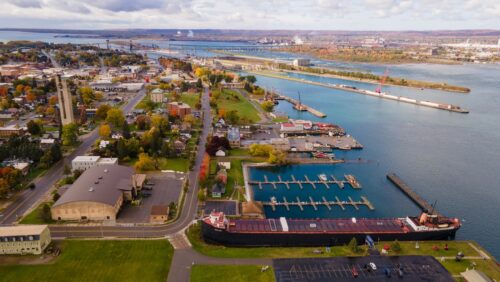North Carolina is home to a growing immigrant community. While 8 percent of the state’s total population is foreign-born, immigrants make up a significant share of North Carolina’s labor force. One-third of all residents working in farming, fishing, and forestry occupations are immigrants, as well as one-fifth of residents working in computer and math sciences. As neighbors, business owners, taxpayers, and workers, immigrants are an integral part of North Carolina’s diverse and thriving communities and make extensive contributions that benefit all.
Eight percent of North Carolina residents are immigrants, while 7 percent of residents are native-born U.S. citizens with at least one immigrant parent.
- In 2018, 824,177 immigrants (foreign-born individuals) comprised 8 percent of the population.
- North Carolina was home to 382,256 women, 385,102 men, and 56,819 children who were immigrants.
- The top countries of origin for immigrants were Mexico (28 percent of immigrants), India (9 percent), Honduras (4 percent), China (3 percent), and El Salvador (3 percent).
- In 2018, 766,355 people in North Carolina (7 percent of the state’s population) were native-born Americans who had at least one immigrant parent.
More than a third of all immigrants in North Carolina are naturalized U.S. citizens.
- 322,458 immigrants (39 percent) had naturalized as of 2018, and 146,916 immigrants were eligible to become naturalized U.S. citizens in 2017.
- Three-fourths (76 percent) of immigrants reported speaking English “well” or “very well.”
Immigrants in North Carolina are distributed across the educational spectrum.
- More than a third (34 percent) of adult immigrants had a college degree or more education in 2018, while over a quarter (29 percent) had less than a high school diploma.
|
Education Level |
Share (%) of All Immigrants |
Share (%) of All Natives |
|---|---|---|
|
College degree or more |
34 |
32 |
|
Some college |
17 |
33 |
|
High school diploma only |
21 |
26 |
|
Less than a high school diploma |
29 |
10 |
|
Source: U.S. Census Bureau, 2018 American Community Survey 1-Year Estimates. |
||
More than 200,000 U.S. citizens in North Carolina live with at least one family member who is undocumented.
- 325,000 undocumented immigrants comprised 39 percent of the immigrant population and 3 percent of the total state population in 2016.
- 429,169 people in North Carolina, including 201,209 U.S. citizens, lived with at least one undocumented family member between 2010 and 2014.
- During the same period, 7 percent of children in the state were U.S. citizens living with at least one undocumented family member (170,487 children in total).
North Carolina is home to tens of thousands of Deferred Action for Childhood Arrivals (DACA) recipients.
- 24,050 active DACA recipients lived in North Carolina as of March 2020, while DACA has been granted to 29,665 people in total since 2012.
- As of 2019, 64 percent of DACA-eligible immigrants in North Carolina had applied for DACA.
- An additional 14,000 residents of the state would satisfy all but the educational requirements for DACA, and fewer than 2,000 would become eligible as they grew older.
One in nine North Carolina workers is an immigrant, together making up a critical part of the state’s labor force across industries.
- 548,197 immigrant workers comprised 11 percent of the labor force in 2018.
- Immigrant workers were most numerous in the following industries:
|
Industry |
Number of Immigrant Workers |
|---|---|
|
Manufacturing |
87,871 |
|
Construction |
80,211 |
|
Accommodation and Food Services |
62,978 |
|
Health Care and Social Assistance |
54,703 |
|
Retail Trade |
49,968 |
|
Source: Analysis of the U.S. Census Bureau’s 2018 American Community Survey 1-year PUMS data by the American Immigration Council. |
|
- The largest shares of immigrant workers were in the following industries:
|
Industry |
Immigrant Share (%) |
|---|---|
|
Agriculture, Forestry, Fishing, and Hunting |
23 |
|
Construction |
21 |
|
Administrative & Support; Waste Management; and Remediation Services |
15 |
|
Manufacturing |
12 |
|
Accommodation and Food Services |
12 |
|
Source: Analysis of the U.S. Census Bureau’s 2018 American Community Survey 1-year PUMS data by the American Immigration Council. |
|
Immigrants are an integral part of the North Carolina workforce in a range of occupations.
- In 2018, immigrant workers were most numerous in the following occupation groups:
|
Occupation Category |
Number of Immigrant Workers |
|---|---|
|
Construction and Extraction |
71,590 |
|
Production |
59,766 |
|
Management |
47,600 |
|
Transportation and Material Moving |
46,515 |
|
Food Preparation and Serving Related |
45,836 |
|
Source: Analysis of the U.S. Census Bureau’s 2018 American Community Survey 1-year PUMS data by the American Immigration Council. |
|
- The largest shares of immigrant workers were in the following occupation groups:
|
Occupation Category |
Immigrant Share (%) |
|---|---|
|
Farming, Fishing, and Forestry |
34 |
|
Construction and Extraction |
24 |
|
Computer and Mathematical |
20 |
|
Building and Grounds Cleaning & Maintenance |
19 |
|
Life, Physical, and Social Science |
17 |
|
Source: Analysis of the U.S. Census Bureau’s 2018 American Community Survey 1-year PUMS data by the American Immigration Council. |
|
- Undocumented immigrants comprised 5 percent of North Carolina’s workforce in 2016.
Immigrants in North Carolina have contributed billions of dollars in taxes.
- Immigrant-led households in the state paid $4.8 billion in federal taxes and $2.2 billion in state and local taxes in 2018.
- Undocumented immigrants in North Carolina paid an estimated $377 million in federal taxes and $262.7 million in state and local taxes in 2018.
- North Carolina DACA recipients and DACA-eligible individuals paid an estimated $58.6 million in state and local taxes in 2018.
As consumers, immigrants add nearly $20 billion to North Carolina’s economy.
- North Carolina residents in immigrant-led households had $19.5 billion in spending power (after-tax income) in 2018.
Immigrant entrepreneurs in North Carolina generate over a billion dollars in business revenue.
- 61,838 immigrant business owners accounted for 12 percent of all self-employed North Carolina residents in 2018 and generated $1.1 billion in business income.
- In the following North Carolina metropolitan areas in 2018, at least one in eight business owners was an immigrant. Immigrants accounted for:
- 13 percent of business owners in the Raleigh/Carey metro area,
- 15 percent in Charlotte/Gastonia/Concord (which spans the Carolinas), and
- 17 percent in Virginia Beach/Norfolk/Newport News (which extends from North Carolina to Virginia).




